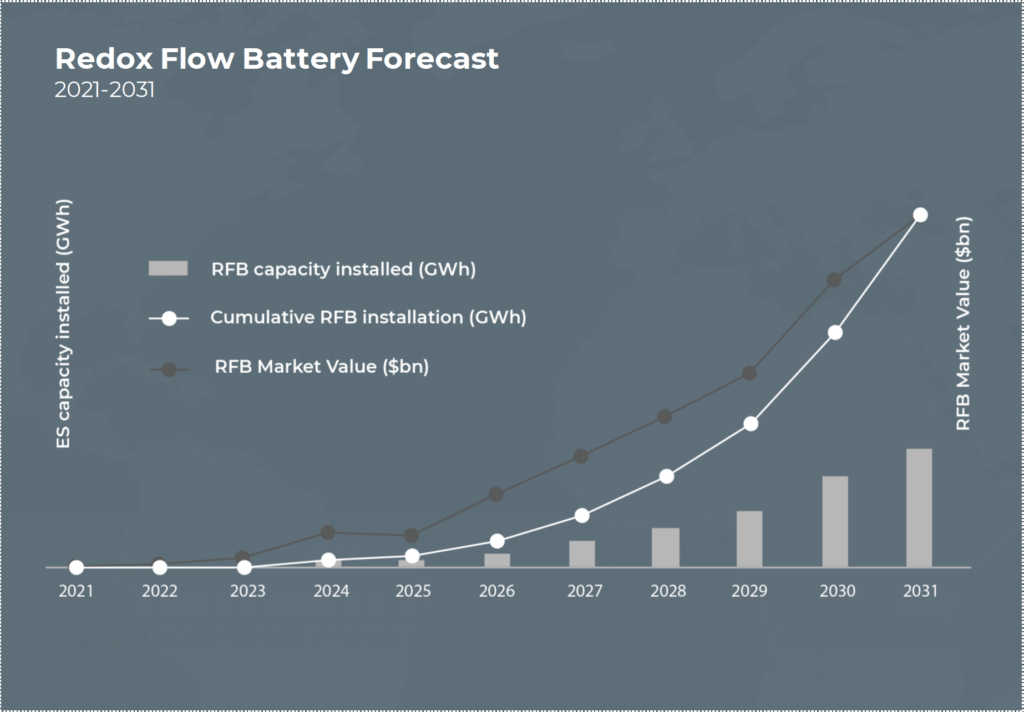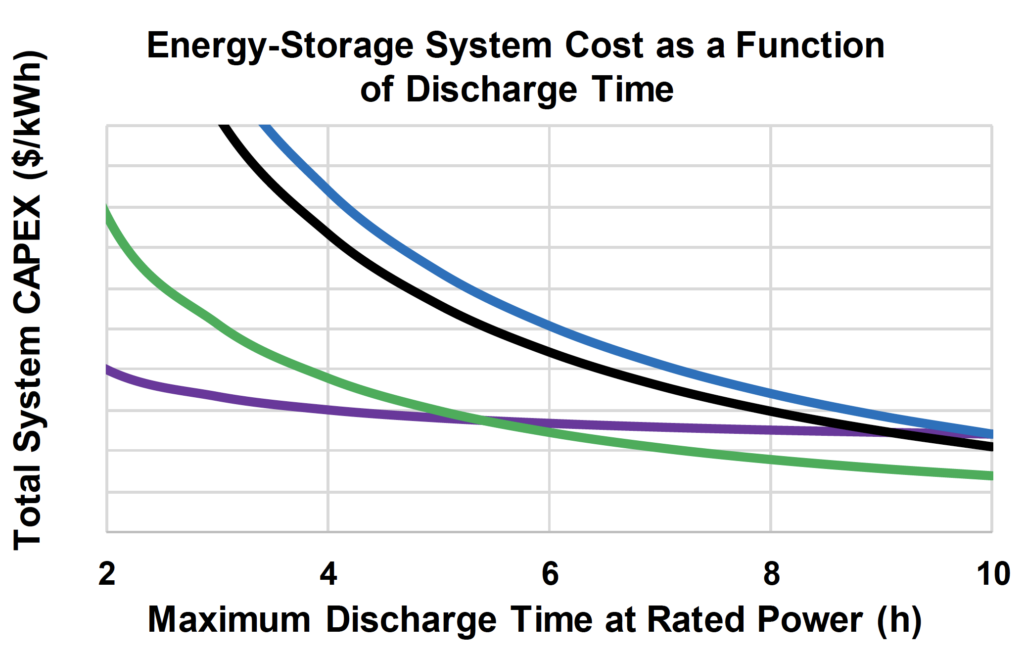Largo Resources aiming to capture 3% of clean energy storage market by 2025

Integrated vanadium producer Largo Resources (TSX: LGO; OTCQB: LGORF) is charting a course towards capturing 3% or about 1,400 megawatt-hours of the long-duration energy storage battery market by 2025, company executives said during the company’s first ‘battery day’ presentation this week.
Largo, which had spun out Largo Clean Energy in December 2020 to provide long-duration vanadium redox flow battery systems for the renewable energy storage market, expects the market’s total installed storage capacity to total about 49,000 MWh by 2025 – worth an estimated $16 billion.
The company intends to capture value in a rapidly expanding market.
WoodMac expects the global market to grow 27-fold by 2030
A recent Wood Mackenzie report found global energy storage deployment surged 62% in 2020, with five gigawatt, or nine-gigawatt hours, of new capacity added. This brought the total energy storage market to more than 27 GWh. WoodMac expects the global market to grow 27-fold by 2030.
“The long-duration energy storage battery market has reached an inflexion point with the advent of the new green economy,” said Largo CEO Paulo Misk during the battery day event. The firm’s vanadium batteries were lower cost and lasted longer than rival solutions, such as lithium-ion battery energy storage.
“Largo brings the missing piece to the puzzle, which is to provide stable, low-cost VRFB technology to market,” said Misk.

The vanadium for the batteries comes from Largo’s 17,690-hectare Maracás Menchen mine in the east-central state of Bahia, in Brazil. Misk expects the company’s vertically integrated approach to result in a 30 to 40% reduced cost of deploying VRFBs than traditional vendors.
While vanadium battery technology is not new, it is widely viewed as an up-and-coming industrial solution for renewable energy providers looking to scale up. The technology essentially works by shuttling vanadium electrons between their different valence states.
It is considered as a superior solution for applications with long-duration discharge requirements of six hours or more. “That is where VRFBs really come into their own,” said Misk.
Revenue streams
Largo Clean Energy expects to harvest three revenue streams from the VRFB business, capturing potential margins of 110% over the conventional vanadium mining and marketing model.
Largo expects to capture margins of 110% over the conventional vanadium mining model
The first revenue is taken during the initial capital outlay to install a VRFB facility. The second is a recurring revenue stream from the lease of vanadium electrolyte for use in the facility over the 25-year-plus life; the third comes from the net present value inherent in the vanadium the company recovers from the facility upon shutdown.
Largo Clean Energy is commercialising VRFB technology previously owned by VionX Energy, a firm involved in the renewable energy storage market since 2002.

“The patented VRFB technology and proprietary vanadium electrolyte processing system can deliver cost-competitive performance over its life cycle with nominal degradation. In general, the VRFB is intrinsically safe with no fire risk from thermal runaway,” said Misk.
Additionally, the contained vanadium electrolyte can be recycled for reuse in other VRFB installations at the end of the battery life.
“Over time we expect to build a portfolio of electrolyte rental assets which will potentially attract very high yields,” said Misk.
Largo provided an example in which the equivalent vanadium pentoxide value of its battery was $12.39 compared with the current market prices at $7.50-8/ per lb. This means that selling vanadium through its battery business provides a potential 50 to 60% upside relative to current vanadium prices.
RBC Capital Markets view the company’s ambitions in a positive light.
“We view Largo’s integrated lease model as a significant opportunity to capture incremental value from the company’s low-cost vanadium production while also potentially helping to grow the vanadium redox flow battery market opportunity,” analyst Andrew Wong said in a research note.
“Overall, we see the potential for a valuation re-rate if Largo is able to execute on the ambitious growth plans and prove the long-term viability of the integrated lease business model to generate steady and sustainable cash flows,” Wong said.
Largo anticipates capital spending of $4.8 million in 2021, $3.4 million in 2022, and a total of $35 million through 2025. Capital requirements are relatively low due to simplicity of the manufacturing process.
Largo has also identified ways to reduce costs of its V-Charge batteries, and expects a 40 to 50% reduction in system costs through system engineering.
“This should flow into Largo’s margin as product pricing is not based on system cost,” said Wong.
{{ commodity.name }}
{{ post.title }}
{{ post.date }}

Comments